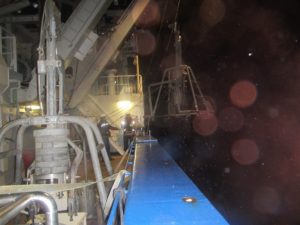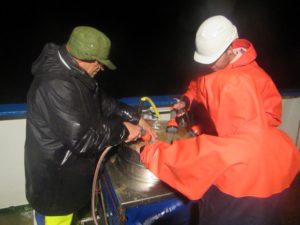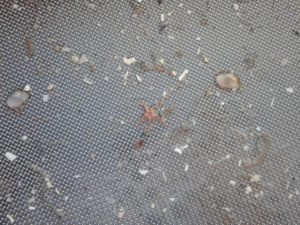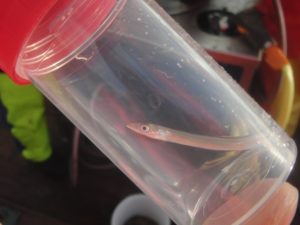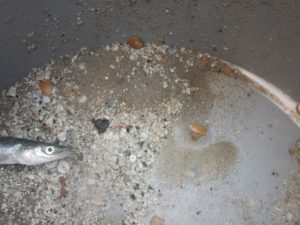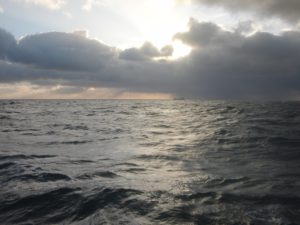We have arrived at the Bruine Bank and started mapping the study area. The coming days we live and work on the research vessel RV Pelagia of the Royal Netherlands Institute of Sea Research (NIOZ). Already, we have been allowed a glance into the lives of North Sea animals. Above water there are various species of gulls, Northern gannets, and we even found a lost sparrow in the bridge of the ship. On and within the seabed we find fish, sea stars, sea urchins, crabs, shellfish, and many worms. In the box cores taken so far, we can see clear differences in sediment type and biodiversity at different locations across the Bruine Bank.
Our goal is to study how natural and human disturbances affect these creatures. In order to do this, we had to face some disturbances ourselves. Leo Koop and Tengku Afrizal are working night shifts, and were up for 26 hours at some point. Also, this weekend there was a storm over the North Sea. Therefore, we were unable to work safely with our heavy and expensive equipment. The 5 meter waves occasionally crashed on deck and some of us (including the author) experienced serious sea sickness.
Luckily, the weather calmed down. Today we have the opportunity to continue our research with renewed motivation and optimism. The plan is to take pictures and videos of the seabed as long as the sea is calm. “What doesn’t kill you makes you stronger” applies to us in this case. Now we study if the same applies for the North Sea communities down below who experience regular disturbances.

